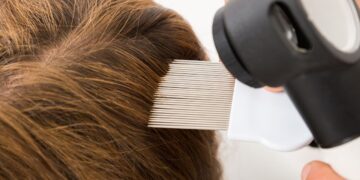
Ear wax, also known as cerumen in medical terms, is a natural substance produced by the glands in your ear canal. It acts as a protective shield, lubricating and keeping your ears healthy and clean.
However, sometimes ear wax can build up, leading to discomfort, reduced hearing, or even infections. Understanding why ear wax build-up occurs and how to manage it can help you maintain optimal ear health.
What Is Ear Wax?
Ear wax is not something to be scared of; it’s quite helpful! It’s a mix of stuff from the sebaceous and sweat glands in your ear. Think of it like this: ear wax is made from dead skin cells, fatty acids, cholesterol, and some alcohol. It might sound a bit gross, but ear wax does some really important jobs.
It catches dust, dirt, and tiny particles, so they don’t reach the delicate parts of your inner ear. Plus, ear wax has special properties that can help fight off germs and infections. It also keeps the inside of your ear nice and moist, preventing dryness and itchiness.
Why Do We Need Ear Wax?
Ear wax is like a natural cleaner for your ears. It helps protect your ear canal by catching harmful stuff like dust and bacteria.
Without ear wax, your ears could be more likely to get infections or injuries. Ear wax also helps to keep the right balance of moisture inside your ear canal, which is especially important if you live in a place with a lot of rain or humidity.
The Natural Movement of Ear Wax
Your body has a clever way of moving ear wax out of your ears. The shape of your ear canal and the movements of your jaw, like when you chew or talk, help push ear wax from the inside of your ear to the outside. The wax then either falls out on its own or can be easily wiped away.
Most of the time, this process works well, and you don’t need to do anything special. But sometimes, things can go wrong, and ear wax can start to build up.
What Causes Ear Wax Build-Up?
Ear wax build-up can happen for several reasons. Here are some of the most common causes:
Overproduction of Ear Wax
Some people just make more ear wax than others. This can be due to genetics or even if your ears are dealing with an infection or irritation. If your ear glands are working overtime, you might end up with more wax than your body can get rid of on its own.
Use of Cotton Buds
A lot of people use cotton buds (or Q-tips) to clean their ears. But guess what? This can push the wax deeper into the ear canal, making it harder for the body to move it out. Over time, this can lead to blockages and discomfort.
Aging
As people get older, their ear wax can become drier and harder. This can make it harder for the wax to move through the ear canal. That’s why older people often have more trouble with ear wax build-up.
Ear Shape and Structure
The shape of your ear canal can also affect how easily ear wax moves out. If you have a narrow or oddly shaped ear canal, it might be harder for the wax to make its way out naturally.
Symptoms of Ear Wax Build-Up
When too much ear wax builds up, it can cause various problems. Here are some signs that you might have a build-up:
- A feeling of fullness or pressure in your ear
- Hearing less clear or muffled sounds
- Earache or discomfort
- Ringing or buzzing noises in your ear
- Itchy or irritated feelings in your ear canal
- Dizziness or feeling off balance
If ear wax build-up is not treated, it might lead to infections, which could cause more serious pain, ear drainage, or even fever.
How to Manage Ear Wax Build-Up
Most of the time, ear wax will move out of your ears naturally. But if you’re having problems, there are ways to manage it safely.
Ear drops can help soften the wax, making it easier for your ear to clear it on its own. You can find ear drops at pharmacies, and they often contain ingredients like olive oil, glycerin, or hydrogen peroxide. Make sure to follow the instructions and never use cotton buds or other objects to try and remove the wax yourself.
For more serious cases, you might need professional help. In the UK, many doctors offer ear cleaning services, like ear irrigation or micro-suction. Ear irrigation involves flushing your ear with water to remove the wax, while micro-suction uses a small suction device to gently take out the wax. Both methods are safe when done by trained professionals.
When to Seek Medical Help
If you have severe symptoms, such as sudden hearing loss, intense pain, or signs of infection like discharge or fever, it’s important to see a doctor. They can check your ears and suggest the best treatment. People who use hearing aids or have had ear surgery should be extra careful with their ear health and might need more frequent checks.
Preventing Ear Wax Build-Up
You might not always be able to stop ear wax build-up, but you can do a few things to help. Avoid using cotton buds to clean your ears, as they can push the wax deeper. Instead, just wipe the outer part of your ear with a damp cloth. If you’re prone to build-up, using ear drops regularly can help keep the wax soft and prevent it from becoming a problem.
Also, if you use earplugs, hearing aids, or in-ear headphones, make sure to clean them often. These devices can trap wax in your ear canal, making build-up more likely.
Ear Wax Management
Ear wax is an important part of keeping your ears healthy. But if it builds up too much, it can cause discomfort. Knowing why ear wax builds up and how to manage it can help you avoid problems.
Most of the time, your ears will take care of themselves, but if you have issues, there are safe and effective ways to treat them. By avoiding cotton buds and seeking professional help when needed, you can keep your ears clean and healthy.















































